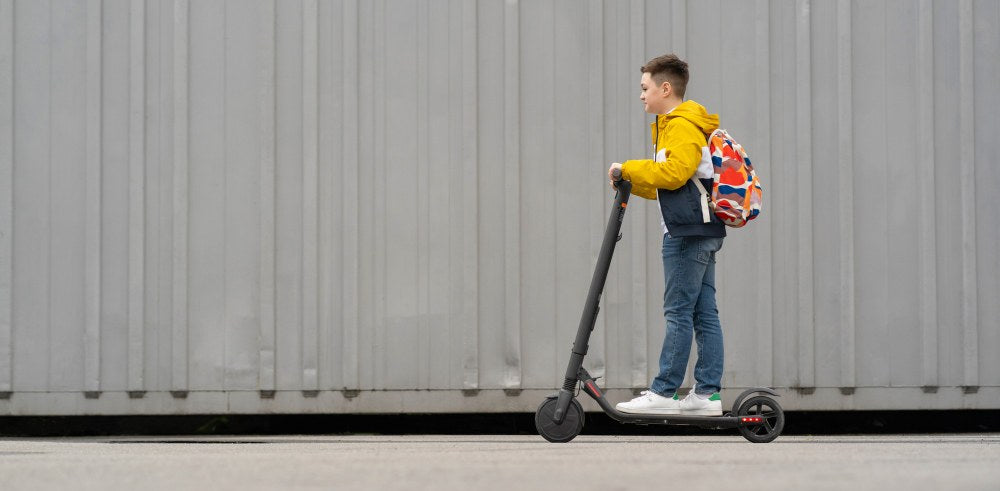
There are a lot of differences between riding an e-bike and a traditional bike. It requires specialised techniques and expertise to keep you going safely. Prior to learning riding techniques, you must have basic knowledge about e-bikes. Here’s what you must know before buying or riding one:
Choosing the Right E-Bike
The first step is to choose the ideal electric bike that suits you best. Mountain bikes, city bikes, and foldable bikes are just a few of the options. Consider your needs, budget, and what you want in a bike, such as how far it can go on a charge, how much assistance it provides when pedalling, and how powerful the motor is. Consider the bike’s chassis, suspension, and whether or not it has lights or fenders.
Understand the Important Parts
Electric bikes feature vital components such as a battery, motor, display, and controller. For best performance and safety, it is important to know how they work and how to care for them. Take note of the following:
- Motor: Hub motors at the wheel hub and mid-drive motors near the pedals are the two types of motors. Choose a mid-drive motor for a more natural pedalling experience and improved balance.
- Battery: The battery, which is measured in watt-hours (Wh), drives the motor. A bigger battery allows you to increase the bike’s range. It is recommended to follow the manufacturer’s recommendations on charging, storing and using the battery. Most e-bikes have a screen that displays information such as battery life, pedal-assist settings, and speed. Make sure to learn the settings before starting your ride.
- Controller: The controller regulates the power of the motor, ensuring a smooth ride. It usually works in conjunction with the display and allows you to adjust the pedal-assist settings.

Tips on Riding an E-Bike
|
Step |
Instructions |
|
Safety First |
|
|
Start |
|
|
Pedal Assist |
|
|
Throttle (if available) |
|
|
Braking |
|
|
Steering |
|
|
Terrain |
|
|
Speed |
|
|
Parking |
|

Before You Take Your First Ride
Check Your Bike: Make sure your e-bike is in good working order. Check the charging status of your battery and that your tires, brakes, and gears are in good working order.
Assemble and Test: Ensure that your bike is correctly assembled and functional to ensure a smooth ride.
Wear a Helmet: For your own protection, always wear a helmet.
Get Comfortable: Check your mirrors, adjust your seat, and turn on the electrical components. Some bikes include a step-through frame, which makes it easier for some people to ride.
During the Ride
Understand Your Pedal Assist: Learn how to use your pedal assist. Some e-bikes begin accelerating immediately, while others may take a few moments.
Pedal: To ride an electric bike, you must pedal. Even though many e-bikes have a throttle, pedalling helps the battery last longer.
Pedal Faster: When riding an electric bike, pedal faster than you would on a traditional bike. This improves the bike’s performance and battery life, especially while travelling uphill.
Control the Gears and Riding Modes: Take note of the gears and riding mode you’re in. Using a low gear or an overly vigorous riding mode will quickly deplete your battery.
Maintain Proper Posture: Maintain proper riding position. Don’t stand up and stomp on the pedals; maintain your seated position, face forward, and engage your core muscles for stability.
Hill Climbing
On the Road: Put your e-bike in the right gear, and the engine will assist you in climbing hills. Mid-drive motors are ideal for hills, although rear-hub motors are also effective.
Off-Road: Climbing slopes off-road necessitates careful gear and speed selection. To maintain stability, remain seated and lean forward slightly. Keep an eye out for potential hazards.
Ending Your Ride
Brake: Because of their weight and speed, electric bikes require more time to brake. To gradually slow down, begin braking well before intersections or obstructions.
Parking: Locate a safe spot to leave your bike. For security, always use a strong U-lock rather than a cable lock.
Recharging: Consider recharging your battery if you’ve travelled more than 10-15 miles one way. You can either park near a charging station or bring your removable battery with you. To reduce energy waste and carbon footprint, unplug the charger while not in use.
